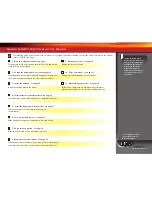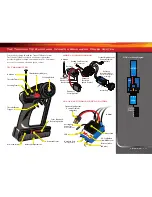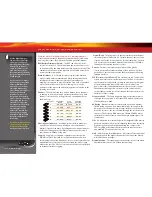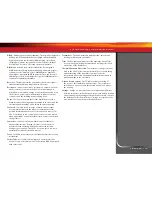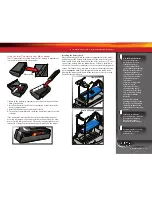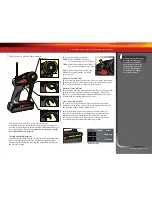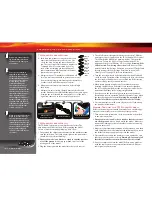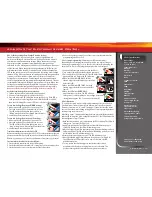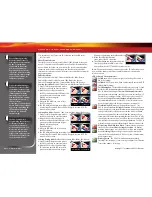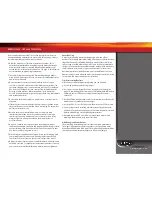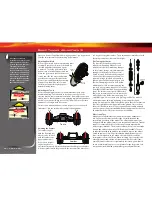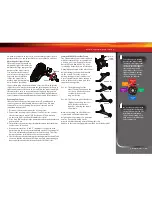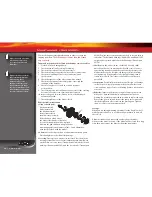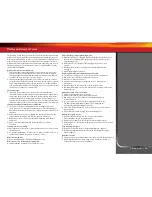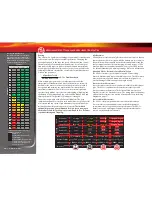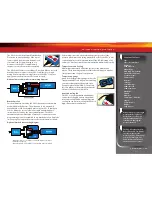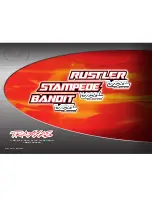
• TR A X X AS
Once you become familiar with driving your model, you might need
to make adjustments for better driving performance
Adjusting Gear Mesh
Incorrect gear mesh is the most common cause
of stripped spur gears. Gear mesh should be
checked and adjusted anytime a gear
is replaced. To set the gear mesh, cut a
narrow strip of notebook paper and run
it into the gear mesh. Loosen the motor
screws and slide the motor and pinion
gear into the spur gear. Retighten the
motor screws and then remove the strip
of paper. You should be able to run a
fresh strip of paper through the gears
without binding them.
Adjusting the Toe-in
Geometry and alignment specs play an important roll in your
model’s handling. Take the time to set them correctly. Set the
steering trim on your transmitter to neutral. Now, adjust your servo
and tie rods so that both wheels are pointing straight ahead and are
parallel to each other (0-degrees toe-in). This will ensure the same
amount of steering in both directions.
For increased stability add one- to two-degrees of toe in to each
front wheel. Use the turnbuckles to adjust the alignment.
Adjusting the Camber
The camber angle of
both the front and rear
wheels can be adjusted
with the camber rods
(upper turnbuckles).
Use a square or right-
angle triangle to set
the camber accurately. Adjust the front wheels to 0 degrees of camber
(wheel perpendicular to the ground). In the rear, adjust the wheels to 1
to 2 degrees of negative camber. These adjustments should be set with
the truck positioned at its normal ride height.
Fine Tuning the Shocks
The four shocks on the model greatly
influence its handling. Whenever you
rebuild your shocks, or make any changes
to the pistons, springs or oil, always make
changes to them in pairs (front or rear).
Piston selection depends on the range of
oil viscosities that you have available. For
example, using a two-hole piston with a
lightweight oil will, at one point, give you
the same damping as a three-hole piston
with heavier oil. We recommend using the
two-hole pistons with a range of oil viscosities
from 10W to 50W (available from your hobby
shop). The thinner viscosity oils (30W or less)
flow more smoothly and are more consistent,
while thicker oils provide more damping. Use
only 100% pure silicone shock oil to prolong seal life. The model’s
ride height can be adjusted by adding or removing the clip-on,
spring pre-load spacers. Adjust the ride height so that the suspension
arms are slightly above being parallel to the ground. Observe how
the model handles in turns. Proper set-up will add stability and help
prevent spin outs. Experiment with different springs and shock oils to
find what works best for your current track conditions.
Wheels and Tires
Many types of aftermarket tires and wheels can be adapted for
use on your model. Most will affect the overall width and the
suspension geometry of the model. The offsets and dimensions
designed into the model’s wheels are intentional; therefore, Traxxas
cannot recommend the use of other non-Traxxas wheels with
different specifications. The diameter of the wheels is an innovative
design, and there are a variety of different tires available for you
to experiment with in addition to the included tires on the model
(listed in your parts list). Experimentation with different types of
tires is recommended to see which ones work the best on the
terrain where the model is run. When selecting tires, consider the
overall diameter and the rubber compound (hard or soft). If the
overall diameter of the tire is significantly increased, you will need
to use a smaller pinion gear to compensate for the larger tire. Soft
compound tires with many short spikes generally work better
Motor
Screws
Strip of
Paper
Basic Tuning Adjustments
1
°
-2
°
1
°
-2
°
0
°
0
°
Pre-load
Spacer
0
o
0
o
1
o
-2
o
1
o
-2
o
-1
o
-1
o
Camber
Toe-in
All of the toe links are
installed on the truck so the
left hand thread indicators
point to the same direction.
This makes it easier to
remember which way to
turn the wrench to increase
or decrease toe link length
(the direction is same at all
four corners). Note that the
groove in the hex indicates
the side of the toe link with
the left-hand threads.
AZ[i=VcYI]gZVY
>cY^XVidg
AZ[i=VcYI]gZVY
>cY^XVidg
;gdcid[IgjX`
;gdcid[IgjX`
AZ[i;gdci
G^\]i;gdci


